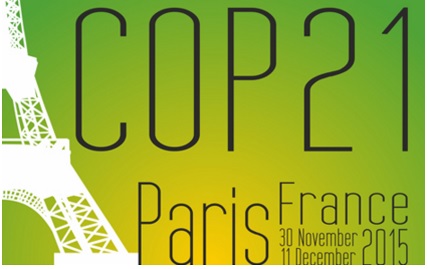How climate talks can enable a low-carbon energy sector – plus aid economic growth and energy access
25 November 2015
IEA Director of Sustainable Energy Policy and Technology Kamel Ben Naceur today presented the IEA’s four key messages for the upcoming UN climate negotiations. Building on extensive IEA analysis leading up to the Paris talks, he explained how the four messages could help COP21 shift the energy sector onto a low-carbon path while supporting economic growth and providing energy to more people.
The four messages are:
- Take five key actions, led by energy efficiency and renewables, to peak global energy emissions.
- Use the Paris Agreement to drive short-term actions consistent with long-term emission goals.
- Accelerate energy technology innovation to make decarbonisation cheaper and easier.
- Enhance energy security by making the energy sector more resilient to climate change impacts
The first message builds on the climate pledges countries have submitted: while they are a leap forward in the breadth and depth of climate response, more is needed. An essential next step towards the 2°C target is a peak, then decline, in global greenhouse gas emissions. The IEA has identified a set of five actions (the “Bridge Strategy”) that use today’s technologies to reduce emissions while maintaining economic growth.
In the second message, to drive short-term actions forward, the IEA calls for locking the vision of the 2°C target into a clear and understandable long-term goal, with five-year revisions to track the transition.
In terms of accelerating innovation, reducing the cost and improving the performance of low-carbon technologies is essential to making the transformation of energy systems affordable and feasible.
Finally, the energy sector faces multiple threats from climate change, in particular from extreme weather events and increasing water stress. By becoming more resilient to climate change impacts, the sector will maintain and improve its technical viability and economic cost-effectiveness in providing energy to meet mounting demand.
The introduction of the IEA’s four key messages set the stage for the many IEA actions and activities during the two weeks of negotiations on limiting global warming that start next week. The IEA is also assisting both member and non-member countries by providing data, modelling, and policy and technology analysis for COP21.
The energy sector is critical to resolving the climate change challenge because it accounts for at least two-thirds of global greenhouse gas emissions. IEA input for COP21 already includes a detailed World Energy Outlook Special Report on Energy and Climate Change that listed four key pillars to a successful COP21, including the five key policy measures that could achieve an early peak in global energy-related emissions. The IEA has also assessed the impact of countries’ climate pledges ahead of the talks. This month, the 29 member countries issued astatement at the IEA Ministerial meeting that called for a successful COP21 as part of the essential transformation of the world’s energy system.
A new IEA brochure, Energy Matters: How COP21 can shift the energy sector onto a low-carbon path that supports economic growth and energy access, details the four key messages. Also, the IEA this month published the 2015 edition of its annual CO2 Emissions from Fuel Consumption, offering for free highlights of the data as well as an excerpt that summarises recent trends.
